The practise of Yoga is thought to have begun with the dawn of civilisation in India. Yoga science dates back thousands of years, well before the birth of the first religions or belief systems. The Word yoga originates from the Sanskrit word “YUJ” meaning to “Union”. The ultimate goal of yoga is to achieve union between the individual consciousness and the universal divine. It is an ancient spiritual science that seeks to bring the mind, body and spirit in harmony or balance.
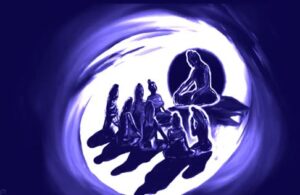
Rooting back to origins, it is estimated that somewhere 15000 years ago a man appeared on Himalayas. That individual is now known as Shiva or Adi yogi, which means “the first yogi.” Whose pleasure was at its height yet had been open for years. People stated he was seeing dimensions that no one had ever seen before. Many of them were interested, but only a handful were willing to wait till the end of time. When Shiva opened his eyes, he saw seven sages in front of him who were eager to learn about dimensions beyond the physical body. Shiva was the first guru or Adi guru to teach the science of Yoga to its seven followers at the time. Who are now referred to as Sapt rishis (Viswamitra, Jamadagni, Gautama, Vasistha, Atri, Bhardwaja, Agastya). These seven sages represent seven distinct forms of yoga. These seven sages took the profound science of Yoga to various parts of the world, including Asia, the Middle East, Northern Africa and South America. The yogic discipline, however, reached its greatest expression in India. Agastya, the Saptarishi who travelled across the Indian subcontinent, built this culture around an essentially yogic way of living.
Yoga’s long rich history can be divided into six main periods: Pre-Vedic, Vedic, Pre-Classical Yoga, Classical Yoga, Post-Classical Yoga, and Modern Yoga.
Pre-Vedic Period (before 3300 BCE):
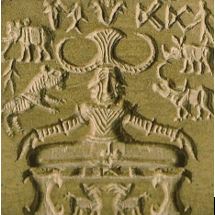 Archaeological discoveries from the Indus Valley Civilization showed a picture of a Yogi meditating in an asana-like posture found on a stone drawing. This is referred to as the Pasupathi seal. It suggests the presence of yoga in pre-Vedic period.
Archaeological discoveries from the Indus Valley Civilization showed a picture of a Yogi meditating in an asana-like posture found on a stone drawing. This is referred to as the Pasupathi seal. It suggests the presence of yoga in pre-Vedic period.
Vedic period (1700-500 BCE):
The Vedas are the oldest Hindu texts, which mainly aims on Yajna which tells to sacrifice of individual’s body and soul in order to meet up with the supreme god by tapas, asana & samadhi. Hymns, mantras and rituals in yoga have come from Vedic yoga.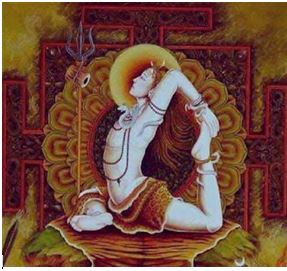
The Vedic people relied on rishis throughout this time period to educate them how to live in divine harmony and understanding of the universe.
The word Yoga was mentioned in Rig Veda.Sun is worshiped as supreme god in this period and so the practice of sun salutation of yoga came into existence.
Pre-classical period (500-200 BCE):
This period starts with the creation of the Upanishads. It describes idea of karma, the cycle of birth and death with explaining three aspects
Ultimate reality; Self; Relations between these two.
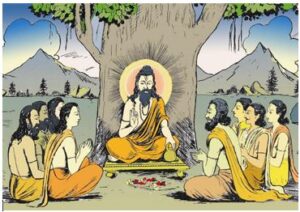
Around 500BCE the Bhagavad Gita came into existence. It has the vast source of yoga philosophy which describes yoga as a bridge between mind and body. According to the Bhagavad-Gita three components of our life must be linked together: Bhakti yoga, Karma yoga, Jnana yoga. Via a single thread, the Gita unites the three Yoga’s to tell Sacrificing the ego through self-knowledge, humility, and respect leads to higher levels of awareness and self-realization.
bandhur ātmātmanas tasya yenātmaivātmanā jitaḥ
anātmanas tu śhatrutve vartetātmaiva śhatru-vat. Gita 6.6
Classical Period (200 BCE – 500 BCE):
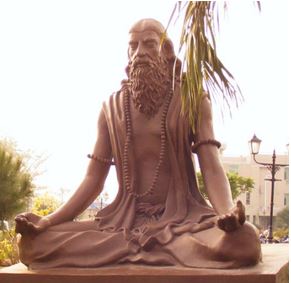 Classical yoga was the beginning systematic yogic practices from Maharshi Patanjali who was considered as Father of yoga. He simplified complex and diversified aspects of yoga into a format known to the world as “Patanjali Yoga Sutras”. This is a collection of 196 sutras on yoga. Patanjali’s Yoga Sutras are the most tremendous documents which are presented in a standardized and approachable way.
Classical yoga was the beginning systematic yogic practices from Maharshi Patanjali who was considered as Father of yoga. He simplified complex and diversified aspects of yoga into a format known to the world as “Patanjali Yoga Sutras”. This is a collection of 196 sutras on yoga. Patanjali’s Yoga Sutras are the most tremendous documents which are presented in a standardized and approachable way.
8 limbs of Ashtanga yoga derived from Patanjali’s Yoga sutras.
Yamas, Niyamas, Asana, Pranayama, Pratyahara, Dharana, Dhyana, Samadhi.
Post-classical Period (19th century):
Yoga took a different path a few centuries after Patanjali. This period begins with probing of the hidden powers of the physical body to achieve enlightenment. The new generation of yoga masters began to explore into the human body’s secret forces, developing a system in which various movements, along with deep breathing and meditation, would assist to regenerate the physical body, prolong life, and reach transcendence.
The human body was regarded as the temple of the immortal soul. Tantra Yoga and Hatha Yoga emerged during this time period.
Modern Period:
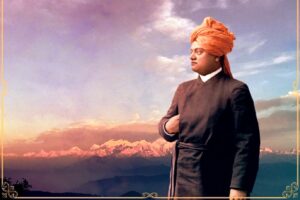 Yoga first appeared in the Western world in the late 19th century. The modern yoga period is claimed to have begun with the 1893 Parliament of Religions in Chicago. Swami Vivekananda had an unforgettable influence on the American people here. Vivekananda was inspired to come to America by his guru Ramakrishna to spread the teachings of Yoga.
Yoga first appeared in the Western world in the late 19th century. The modern yoga period is claimed to have begun with the 1893 Parliament of Religions in Chicago. Swami Vivekananda had an unforgettable influence on the American people here. Vivekananda was inspired to come to America by his guru Ramakrishna to spread the teachings of Yoga.
The idea of an International Day of Yoga was first proposed by the current Prime minister of India, Narendra Modi, during his speech at the United Nations General Assembly (UNGA), on 27 September 2014. He stated:
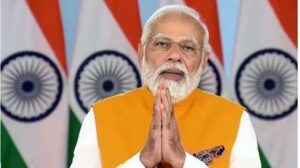 “Yoga is an invaluable gift of India’s ancient tradition. It embodies unity of mind and body; thought and action; restraint and fulfilment; harmony between man and nature; a holistic approach to health and well-being. It is not about exercise but to discover the sense of oneness with yourself, the world and the nature. By changing our lifestyle and creating consciousness, it can help in wellbeing. Let us work towards adopting an International Yoga Day. — Narendra Modi, UN General Assembly.
“Yoga is an invaluable gift of India’s ancient tradition. It embodies unity of mind and body; thought and action; restraint and fulfilment; harmony between man and nature; a holistic approach to health and well-being. It is not about exercise but to discover the sense of oneness with yourself, the world and the nature. By changing our lifestyle and creating consciousness, it can help in wellbeing. Let us work towards adopting an International Yoga Day. — Narendra Modi, UN General Assembly.
 On the International Day Of Yoga Anil Kumar writes about the origins of YOGA)
On the International Day Of Yoga Anil Kumar writes about the origins of YOGA)

Readers like you, make ESHADOOT work possible. We need your support to deliver quality and positive news about India and Indian diaspora - and to keep it open for everyone. Your support is essential to continue our efforts. Every contribution, however big or small, is so valuable for our future.

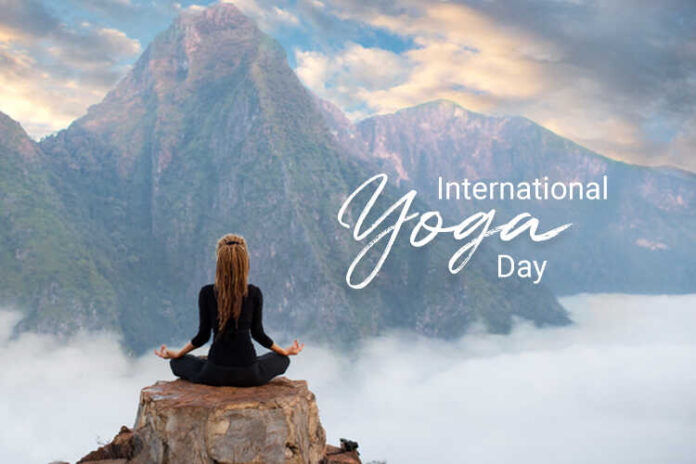

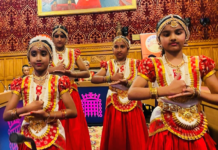
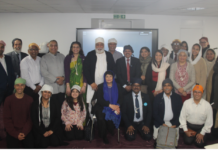

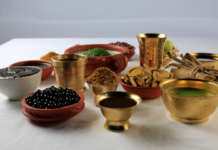
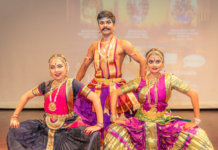




Excellent article our heritage chronologically explained
No other country can ever match what India has and let’s preserve and promote as Modiji